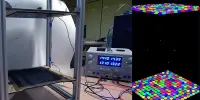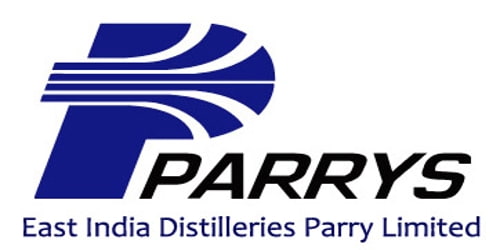Acousto-optic modulators (AOMs) are devices that employ sound waves to change the strength, frequency, or phase of a laser beam. It, also known as a Bragg cell or an acousto-optic deflector (AOD), employs the acousto-optic effect to diffract and change the frequency of light using sound waves (typically at radio-frequency). It makes use of the acousto-optic phenomenon, which is the interplay of sound waves and light waves in a medium, often a crystal. They are employed in lasers for Q-switching, telecommunications for signal modulation, and spectroscopy for frequency control.
A glass-like substance is connected to a piezoelectric transducer. When an acoustic wave passes through a crystal, it causes a periodic modulation in the material’s refractive index. An oscillating electric signal causes the transducer to vibrate, causing sound waves to be created in the material. These are moving periodic planes of expansion and compression that vary the index of refraction. Similar to Bragg diffraction, incoming light scatters off the resulting periodic index modulation, and interference ensues. This modulation influences the passage of light through the crystal, resulting in changes in the light’s attributes such as intensity, frequency, or phase.
The interaction between phonons and photons can be conceived of as a three-wave mixing process that results in Sum-frequency generation or Difference-frequency generation. An AOM’s basic structure consists of a crystal, typically constructed of tellurium dioxide (TeO2) or fused silica, and a transducer that generates the acoustic wave. Typically, the transducer is made of piezoelectric material, which translates electrical signals into mechanical vibrations. The acoustic wave produced by these vibrations travels through the crystal, generating a periodic fluctuation in the refractive index.
Here’s how an acousto-optic modulator works:
- Crystal or Material: AOMs are often composed of crystals such as tellurium dioxide (TeO2) or materials such as fused silica. These materials have the ability to transmit sound waves while also interacting with light.
- Sound Wave Generation: To generate high-frequency acoustic waves within the AOM crystal, a piezoelectric transducer is used. When an electrical signal is supplied to the transducer, mechanical vibrations or sound waves are generated within the crystal.
- Acoustic Wave Interaction: Acoustic waves cause regions of changing density as they propagate through the crystal, which correlate to regions of varying refractive index. This periodic shift in refractive index causes the crystal to form a diffraction grating.
- Light Interaction: A laser beam is directed into the AOM, and the diffraction grating created by the acoustic wave interacts with the laser beam. The light beam is split into multiple orders (diffracted beams), and the intensity and/or frequency of these diffracted beams can be controlled by adjusting the frequency and amplitude of the acoustic wave.
- Modulation and Deflection: By changing the frequency and amplitude of the acoustic wave, you can control the diffraction pattern and, in turn, the intensity, frequency, or phase of the laser beam. This allows for various applications such as amplitude modulation, frequency shifting, and beam deflection.
Advantages
AOMs have various advantages, including fast modulation speeds, non-mechanical beam steering, and the ability to modify laser beams across a wide wavelength range. They are commonly used in laser spectroscopy to choose wavelengths and control beam strength, in laser communication to steer beams, and in laser printing to precisely adjust laser intensity during printing processes.
Application
The AOM is useful for a variety of applications such as laser beam modulation, frequency shifting, and optical signal processing. It is widely used in a variety of applications, including telecommunications, laser printing, laser machining, spectroscopy, and laser imaging. AOMs are essential instruments in research and industrial applications that require precise control of laser light due to their ability to manipulate laser beams fast and precisely.
















